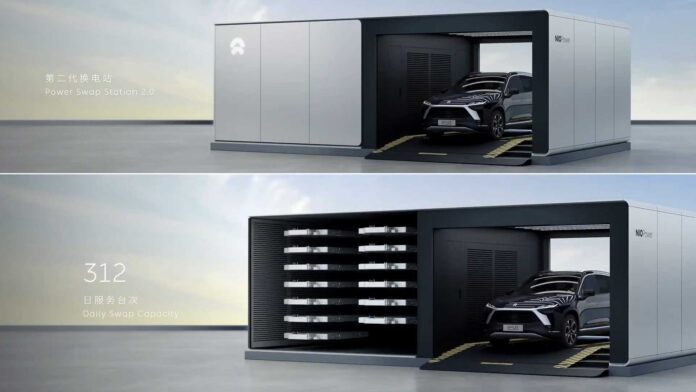NIO, the Chinese electric vehicle (EV) manufacturer, has introduced a unique approach to addressing one of the most significant challenges in the EV industry—battery charging. Instead of solely relying on traditional charging stations, NIO has pioneered the concept of battery swapping, offering a faster, more efficient solution to keep EVs running without the need for long charging times. This innovation has positioned NIO as a leader in the EV industry, especially in markets like China, where demand for convenient and sustainable energy solutions is rising.
What is Battery Swapping?
Battery swapping is a process where the depleted battery in an EV is exchanged for a fully charged one at specialized stations. Instead of waiting for the battery to charge, which can take anywhere from 30 minutes to several hours depending on the charging method, NIO owners can pull into a battery swap station and have their battery replaced in just a few minutes. The entire process is automated and highly efficient.
NIO’s battery swap stations are strategically placed to allow for easy access, especially on long-distance routes. With more than 1,800 battery swap stations operational as of 2024, NIO aims to expand this network further, making it a feasible solution for its customers.
How NIO’s Battery Swapping Works
The process of swapping a battery at a NIO Power Swap station is designed to be as simple and convenient as possible:
- Automatic Process: The driver pulls into a swap station, and the car is automatically positioned over the swapping platform.
- Battery Exchange: The station’s robotic system removes the depleted battery from the vehicle and replaces it with a fully charged one in approximately 3 to 5 minutes.
- Real-Time Battery Monitoring: NIO ensures that all batteries are monitored and maintained, offering users access to the latest battery technology upgrades when available.
The automated nature of this process means there’s no need for manual intervention, and drivers don’t even have to leave their vehicle during the swap.
Advantages of Battery Swapping
- Speed: One of the key benefits of battery swapping is the drastic reduction in downtime. While fast charging stations may take 30 minutes or more to partially recharge a battery, NIO’s battery swapping system completes the process in under five minutes, rivaling the convenience of traditional gasoline refueling.
- Battery Flexibility: NIO’s model allows drivers to upgrade their batteries as new, more advanced versions become available. This flexibility ensures that NIO drivers are not tied to a single battery type or capacity throughout the life of the vehicle.
- Lower Initial Costs: NIO offers a Battery-as-a-Service (BaaS) model, which allows customers to purchase the car without the battery, significantly reducing the upfront cost. Drivers then subscribe to a monthly battery leasing service. This not only lowers the initial investment but also provides flexibility for upgrading the battery in the future without purchasing a whole new vehicle.
- Battery Lifespan and Management: With centralized battery management, NIO ensures that all batteries are well-maintained and regularly checked for quality. This reduces concerns about battery degradation over time, a common issue for EV owners.
Challenges and Limitations
While NIO’s battery swapping technology has garnered significant attention and praise, it also faces some challenges:
- Infrastructure: Building and maintaining a large network of battery swap stations is expensive. NIO has heavily invested in expanding its network, but scaling this globally, particularly in regions with lower EV adoption, could be challenging.
- Standardization: For battery swapping to become a widely adopted solution across the industry, standardization of battery designs and swapping systems is crucial. Currently, NIO’s battery swapping is specific to its own vehicles, limiting its applicability to a broader EV market unless other manufacturers adopt similar standards.
Future Outlook
NIO has ambitious plans to expand its battery swap network. The company aims to have over 4,000 battery swap stations globally by 2025, with a particular focus on expanding into international markets such as Europe. In addition, NIO is working on further enhancing its battery technology, offering higher capacity batteries that provide longer driving ranges, making the battery swapping model even more attractive.
As the EV industry evolves, NIO’s battery swapping model stands out as a game-changer. It not only addresses range anxiety and charging wait times but also provides flexibility and cost savings for customers. With continued investments and technological improvements, NIO’s innovative approach could influence the broader EV market and drive the adoption of battery swapping as a mainstream solution.




